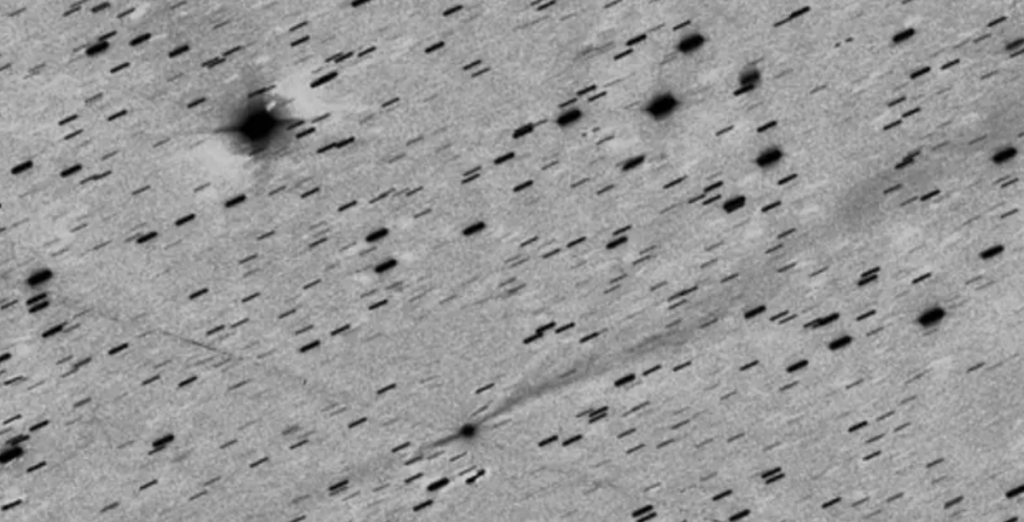As interstellar comet 3I/ATLAS moves through the inner solar system, its behaviour continues to puzzle astronomers.
Others are reading now
New images capturing unusual, sideways streaks near the object have revived debate over whether the comet is shedding natural fragments, or something more unusual.
The discussion intensified this week after Harvard astronomer Avi Loeb expanded on his earlier claims that 3I/ATLAS may have released small travelling objects.
Unusual signatures
A stacked image taken on 20 November by M. Jäger, G. Rhemann and E. Prosperi shows two thin jets extending roughly a million kilometres from the comet, According to a new analysis published by Avi Loeb.
The lines appear perpendicular to both the tail and anti-tail, creating an X-shaped pattern.
Loeb wrote that the straight, narrow features are difficult to reconcile with earlier reports suggesting the comet rotates every 16.16 hours.
Also read
If that rotation rate were correct, he argues, the jets should show gaps or distortions tens of thousands of kilometres long, features not present in the new image.
He added that typical outgassing is expected to follow the Sun–comet axis, not form vertical sideways lines.
One alternative, he said, is that the lines could simply be the track of an Earth-orbiting satellite passing through the field of view.
Possible fragments or probes
If not a satellite streak, Loeb suggested that the jets may highlight the trail of “mini-objects” that separated from 3I/ATLAS.
In earlier remarks reported by WION, he floated two possibilities: natural pieces of ice that broke off, or small probes released from what he once described as a potential “technological mothership.”
Also read
He calculated that if the objects began moving at perihelion on 29 October, they could have travelled a million kilometres in 22 days, an average speed of about 500 metres per second relative to the comet.
Loeb also linked the new pattern to an X-shaped glow captured on 2 October by NASA’s HiRISE camera near Mars, which he interpreted as an early phase of the comet breaking into multiple components.
According to his analysis, such an early release would require an ejection speed of about 200 metres per second, a figure he said is compatible with a modest propulsion system but unlikely to be caused by the Sun’s tidal forces.
What comes next
Loeb wrote that observations in the coming weeks will be crucial to determining whether the lines signal real objects or are an artefact of imaging.
“The fundamental question,” he said, “is whether these smaller objects are real and not an artefact of a satellite streak, and if real, are they natural or technological in origin?”
Also read
3I/ATLAS, discovered on 1 July by the ATLAS telescope in Chile, is travelling at roughly 60 km per second on a hyperbolic path that confirms its interstellar origin.
It passed close to Mars earlier this year and will reach its nearest approach to Earth on 19 December 2025 before heading toward Jupiter.
After showing no tail for months, it began brightening and releasing material shortly after perihelion.
Sources: WION, Avi Loeb (Medium)


